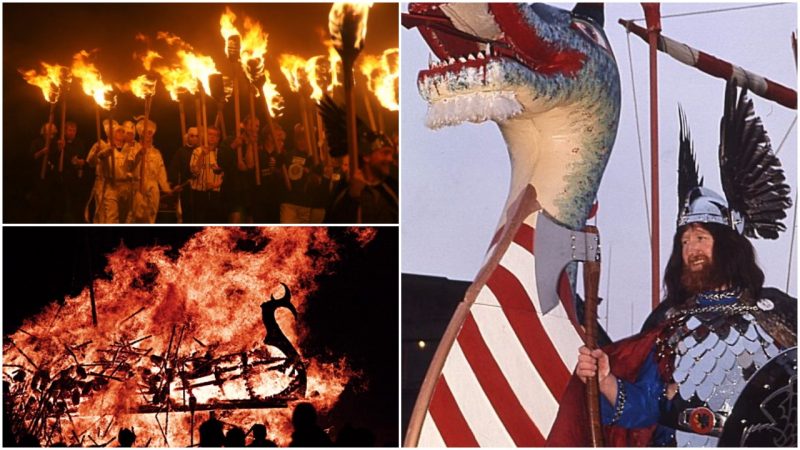In the middle of each winter, the Shetland Islands of Scotland are transformed by up to 1,000 people who participate in fire festivities while dressed up as Vikings. A relatively modern tradition, Up Helly Aa is not just any ordinary festival but a spectacle of its own. It marks the end of the Yule season, or what would have been the Christmas festivities in Scotland prior to the Reformation of 1560.
This celebration represents many things to many people. The tradition first thrived at the main port of the Shetland Islands, in the town of Lerwick. Similar processions with fewer participants are also part of more rural festivals strewn across the islands. Squads march through a town or a village, wearing various historical or satirical costumes.
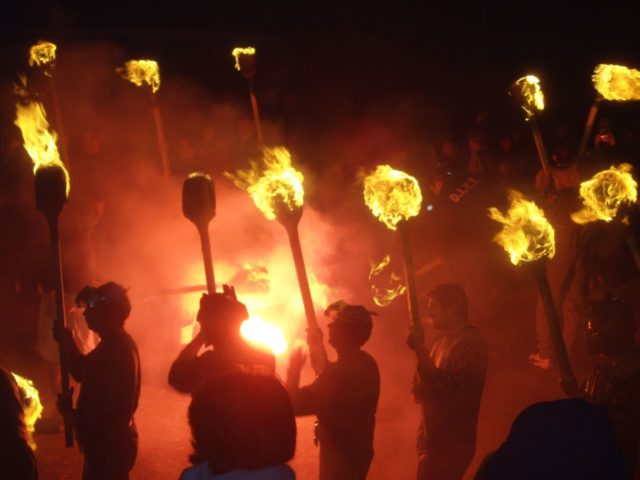
Beginning in the 8th century, Vikings repeatedly raided Scotland. The northern islands of Shetland and Orkney were favorite targets for Scandinavian settlement. The Scots name Up Helly Aa roughly translates to “Up Holy Day All.” According to John Jamieson, a 19th-century Scottish minister of religion, lexicographer, and philologist, the word up in the name is used in the sense of something that has come to an end. He suggests that the word was derived from the Old Norse word uppi, which is still used in Icelandic and Faroese. “Helly” means a holy day or festival, derived from another Old Norse word, Helgr. This word signifies a series of festive days, but particularly references Christmas. The final word Aa means “all.”
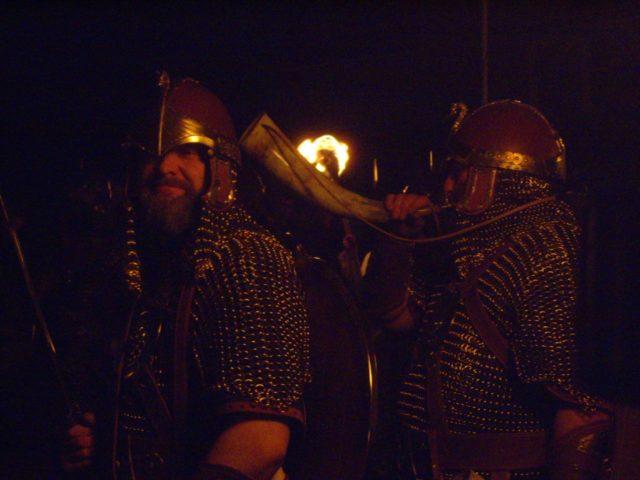
Back in the day, people in rural Shetland celebrated the 24th day after Christmas as “Antonsmas” or “Up Helly Night.” However, it is hard to tell whether this was tied to the festival that later appeared in Lerwick. It might have developed following the Napoleonic Wars, when soldiers and sailors returned home with some violent habits and a taste for firearms.
On old Christmas Eve in 1824, a Methodist missionary visiting the island wrote in his diary, “[the] whole town was in an uproar: from twelve o’clock last night until late this night blowing of horns, beating of drums, tinkling of old tin kettles, firing of guns, shouting, bawling, fiddling, fifeing, drinking, fighting. This was the state of the town all the night – the street was as thronged with people as any fair I ever saw in England.”
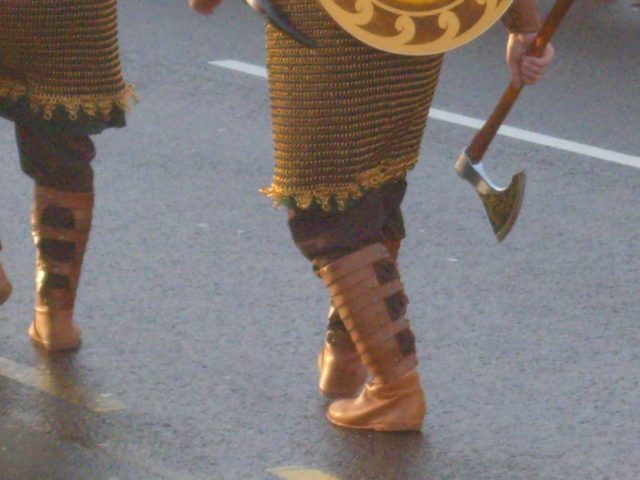
As the city of Lerwick has grown, the procession has also evolved. Around 1840, the participants introduced tar barrels to the festivities. Young men divided into rival groups would drag burning tar barrels on sleds through the town. They would clash in the middle of Lerwick’s narrow main street. People complained that this part of the procession was too dangerous and dirty, though, so the activity was abandoned by 1880.
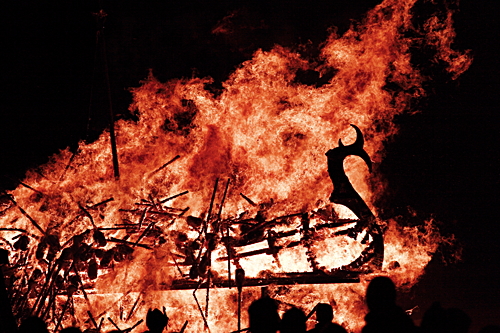
The burning tar barrels would be exchanged for the Yule torch procession, the first of which was in 1876. The initial celebration of Up Helly Aa then took place in 1881. Around this time, a special committee was formed to continue to shape the festivities. They further established the torch procession to honor the visit of Alfred, the Duke of Edinburgh. The same group of people came up with the name of the festival and also introduced the so-called “guizing” costumes into the festivities.
The “Jar” or “Jarl” became an honorary role, enriching the festivities during the early 20th century. In medieval Scandinavia, a Jarl was a noble ranking just below King. The ceremony’s Jarl must have served as member of the committee for at least 15 years, as it’s his job to be the most prominent character in the festival.
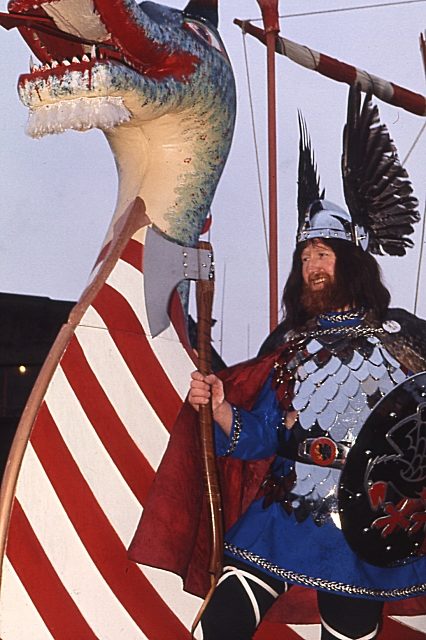
There is also the Jarl Squad, which is comprised of supporters of the Guizer Jarl. Out of all the squads of participants, this is the principal one. The procession commences after nightfall; a replica Viking longship or galley is dragged through the streets of the town, accompanied by torches. The torchbearers are led by the Jarl Squad. The procession culminates with the torches being thrown into the replica Viking vessel.
Before burning the galley, the crowd sings a traditional Up Helly Aa song, and once the vessel is consumed by the fire, they sing another traditional song, “The Norseman’s Home.” Once the ritual is finished, the squads gather at local venues such as schools or hotels and hold private parties. Each squad performs an act of its own, either a send-up of some popular film or a singing and dancing performance.
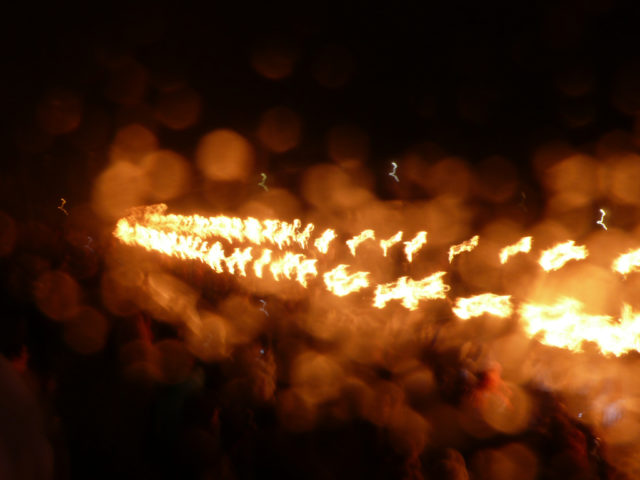
Up until the beginning of World War II, Up Helly Aa was generally a festival of young working-class men, with women never taking part in the actual proceedings. When Queen Victoria died in 1901, the festival was canceled. There were no festivities throughout the duration of the two world wars either.
The festival resumed in 1949. In that same year, the BBC aired a radio feature on Up Helly Aa, and from that moment on the festivities evolved into something much greater.
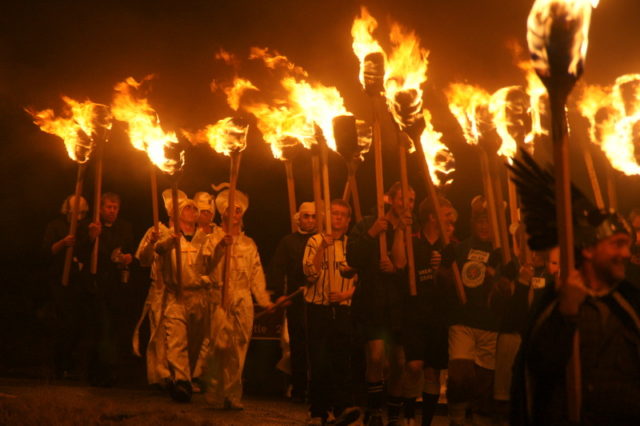
Currently, the celebrations take place in at least 10 different locations all over Shetland. Aside from Lerwick, there are processions in Scalloway, Nesting, South Mainland, and Bressay, to name a few.
Read another story from us: The Vikings sold narwhal tusks as unicorn horns
So if you don’t mind the weather and are interested in the Viking festival, Up Helly Aa is definitely an experience you should see in your lifetime, at least once.
